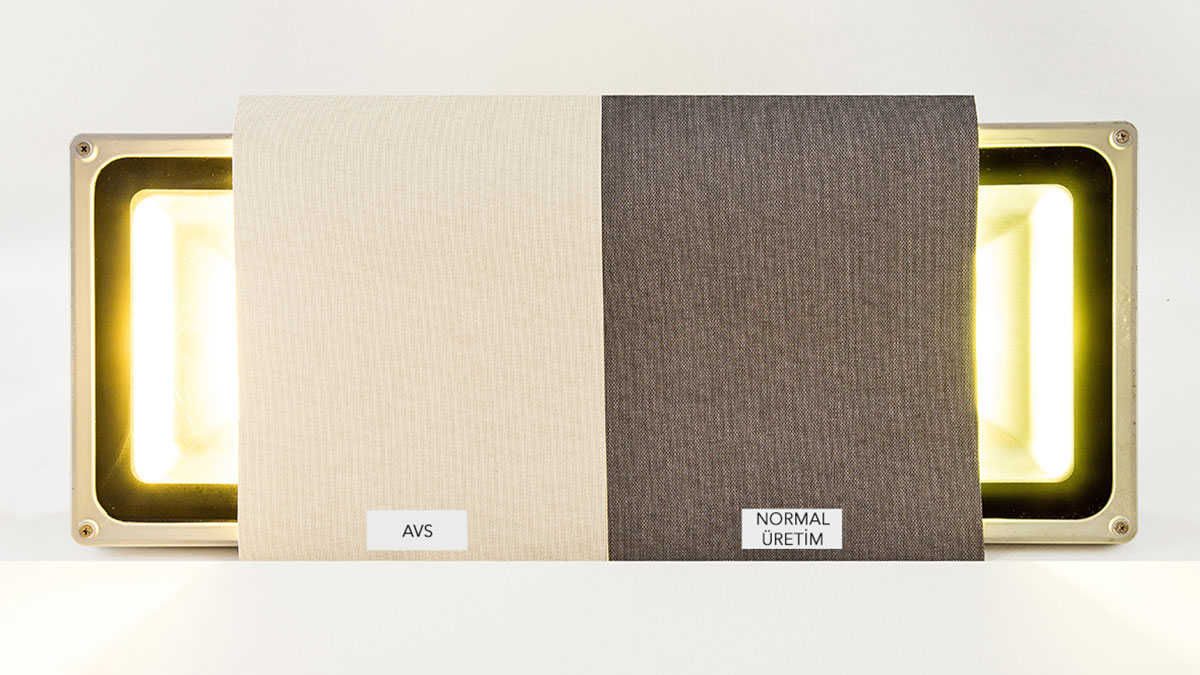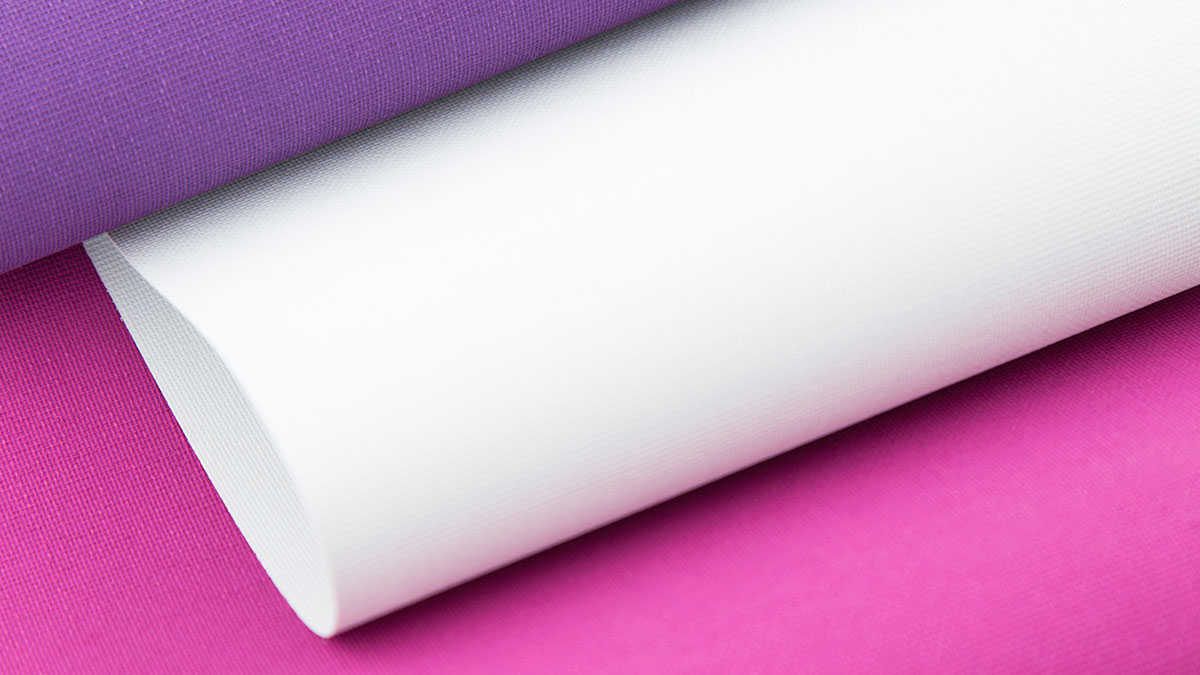“Developing Roller Blinds From Antiviral 100% Blackout Fabric” written by Volkan YILDIRIM/Oba Perdesan
Abstract
Bacteria and fungi can develop on textile materials used in social and medical fields, and these can pose a danger to human health. Infection-based diseases and deaths caused by microorganisms have increased the importance of antiviral textile products. Considering the pandemic we are experiencing, there is a need for products that can neutralize the viruses which can be transmitted in a short time in order to create a healthy environment in people’s living spaces. Antiviral, 100% blackout fabric roller blinds were produced to meet this need.
Keywords: Antiviral, roller blind, antibacterial, blackout fabric.
1. Introduction
People come into contact with various bacteria, fungi and other microorganisms in their daily lives. Provided with suitable environmental conditions, these microorganisms reproduce rapidly and infect humans.
In the modern age, the living conditions and working environments of human beings offer suitable environments for such microorganisms to reproduce rapidly. Microorganisms are found in the body, air, soil, and all surfaces. These microorganisms can multiply rapidly in their environment when basic requirements such as moisture, nutrients and temperature are met.
Textile products used in social and medical areas are among the environments that support the growth and reproduction of microorganisms such as bacteria and fungi. In general, these microorganisms cause bad odour in the product, deterioration of the product, stain formation, etc. and more importantly, it causes infectious diseases in human health and deaths.
Considering the increase in pandemics worldwide and the new coronavirus called SARS-CoV-2, the development of antiviral materials has gained significant importance. If the necessary warnings and precautions are not increased, it is predicted that such microorganisms may cause the death of an average of 10 million people annually by 2050 (O’Neill 2016). In order to create a healthy environment in people’s living spaces, the surfaces of the products must have an antiviral functionality. For this reason, there is a need for products that will neutralize viruses in a short time and create a healthy environment.
Antiviral agent is defined as a natural, synthetic, or semi-synthetic substance that kills microorganisms, such as bacteria, mould, yeast, fungus, etc. and prevents their reproduction. It is desired to have antiviral properties, especially in textile products used in the medical and hygienic milieus to prevent unwanted situations such as the attachment of microorganisms to the surface and the transmission of the diseases caused by them.
To meet this need, in addition to producing antiviral products by using completely antimicrobial materials, antiviral properties can be obtained by using various methods in non-antiviral materials.
The usage areas of antiviral materials have increased gradually in our daily life. Its use in textile is also widely available. Antiviral material can be applied to the product, which is desired to be given antiviral properties, during production, as well as after the product is manufactured. For example, when it is desired to manufacture antiviral fabric, antiviral material can be added to the product during the production of fibres, which are one of the components of the fabric, and antiviral properties can be added to the fabric by different methods such as the coating method after the fabric production is completed. Antiviral properties can be in the form of slowing down the functional properties of microorganisms, stopping or destroying the microorganism. It is important to improve the antiviral properties of textile products, to provide protection against bad odours and microorganisms, to avoid undesirable reactions and to use non-toxic materials in these products.
One of the antiviral textile production methods is the application of antiviral chemicals in the finishing processes. Today, 80% of the manufactured antiviral textile products are produced by this method. Antiviral chemicals can be applied to the textile material by exhaustion, impregnation, coating, transfer, spray, or foam application methods. Antiviral fabric treatment is accomplished through chemical finishing agents.
Our aim in this study is to produce roller blinds with 100% blackout fabric that can neutralize the viruses that can infect the textile product in a minimum time.
2. Material and Method
The fabric to be used in this study is Panama 2 × 2 fabric produced from 100% PES staple fibre yarn.
While producing the fabric of the invention, the chemicals to be used in the fabric must first be prepared. Antiviral is mixed with black-out foam and acrylic mixture. And pH adjustment is made with ammonia.
The fabric of the invention is obtained by coating the fabric with the prepared chemical mixture according to the following method steps.
- Winding the raw fabric to the dock to make it ready for the process by passing it through the coating stenter.
- Adjusting the machine at the determined transition values so that the fabric of the invention is suitable for all method processes in the coating stenter.
- Adjusting the height of the coating blade in the machine, the angle of the contact surface of the fabric and the tension of the fabric under the blade for fabric coating.
- Ensuring that the drying temperatures in the coating stenter are stable to the predetermined drying temperatures determined for the fabric.
- Applying the coating to the fabric.
After the coating is finished, the technical and visual features of the fabric are checked. The fabric of the invention has antiviral and foam coating 100% blackout fabric properties.
3. Conclusion
The aim of this study is to produce roller blinds from fabric with antiviral properties. The tests of the study were concluded with the antiviral activity determination test of plastic and other smooth surfaces in the Antimicrop R & D and Biocidal Analysis Center in accordance with ISO 21702: 2019 standards. As a result of the studies, 99.97% efficiency has been achieved in the production of roller blinds made of light-proof antiviral fabric.

References
- Sarı, Ç., “Antibakteriyel ajan içeren β-siklodekstrin kompleksinin ve türevinin pamuklu kumaşlara uygulanması ve karakterize edilmesi”, Master’s Thesis, Pamukkale University Institute of Science and Technology, Denizli, (2020).
- Turşucular, Ö.F., “Polikaprolakton-kitosan nanoliflerin üretiminde ve antibakteriyel aktivitesi üzerinde çözücü etkisinin araştırılması”, Master’s Thesis, Uludağ University Institute of Science and Technology, Bursa,(2017).


